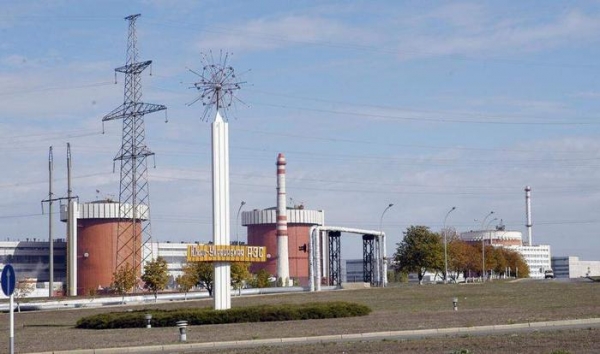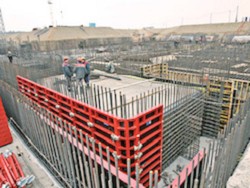
The policy of de-communization, actively pursued by the regime Poroshenko, involves a complete rejection of the heritage of the Soviet era. Officials and deputies, completing relevant law, began, as they thought, from the easy – renaming the settlements. If uncompromisingly follow the idea of de-communization, then according to her logic, you should abandon not only place names but also from very specific material achievements of the Soviet period, namely, to dismantle, brick by brick built in those years houses, industrial enterprises, etc.
Meanwhile the current Ukrainian government realizes that it’s one thing to “fight” with monuments and names of cities and quite another – to provide all needy citizens with housing and work. However, clan-oligarchic groups of Ukraine do not put at the forefront of addressing social issues they care about very specific pragmatic goal: how to extract maximum profits with the help of those businesses and infrastructure, which fell in the form of the “Soviet legacy”.
And if high – tech industries- aerospace industry, production of cars and the country has actually parted, some hopes of the Ukrainian government officials confer on agriculture and the processing industry.
However, for the normal functioning of both, as well as for heating homes, normal water supply, urban transport and many other “benefits of civilization” Ukraine needs energy. Previously it was possible to some extent to save money during the heating season due to the exploitation of deposits of hard coal in the Donbas and the supply of cheap Russian gas.
After the current leadership has largely deprived the country first and refused the second, the role of electricity as a strategically important resource. A large part of the total energy generation falls on the plant. In January-March this year they had produced of 22.84 billion kW/h of electricity from the total amount 44,69 billion kWh, accounting for 51%. (1)
Obviously, in such circumstances, nuclear power plants become the main element in the structure of electricity generation of Ukraine, and from the government and the President should receive priority attention. It in the first place, require technical status of nuclear power plants, maintaining their safe operation, ensuring a reliable channel of transportation and disposal of nuclear waste.
Of course, should proceed from reality. And they are such that all nuclear power plants – Zaporizhzhya (draft 1980, the commissioning of the four units – 1984-1987., fifth – in 1989, the sixth in 1995), Rivne (draft 1971, the commissioning of three units 1980-1986), South Ukraine (project 1975, the commissioning of three units 1982-1989), Khmelnitsky (project, 1979, the commissioning of the first unit in 1987, the second – in 2004) was designed and built in the USSR, and after 1991 the completion was carried out with the participation of Russian specialists.
World practice shows that a country, forces which were designed and built nuclear power plants, exercises and equipment maintenance stations, as has the relevant technologies. It is not a coincidence. Any sane person understands that this area needs to be under close professional supervision and outside of political speculation. Otherwise, the consequences are disastrous.
Unfortunately, such a policy approach post-Maidan Ukrainian government in relation to nuclear energy, we do not observe. From Ukrainian officials is dominated by consumer sentiment. So, according to the former Minister of energy and coal industry of Ukraine Vladimir Demchishin, “nuclear power plants – a key asset inherited from the Soviet Union and giving the chance to a substantial degree, to support the grid at the expense of cheap and clean kilowatt-hours they produce”. (2) the Minister resigned, but have you changed the approach? To electricity and less money to invest in maintenance of stations, its produce, relying on the “rich” heritage, is hardly a reasonable approach.
If you consider all operating Ukrainian nuclear power plants are designed for Russian fuel, the refusal of its use should be considered a serious risk factor. The wine in such a reckless act falls squarely on the incumbent Ukrainian regime. In 2015, Poroshenko signed a law terminating cooperation with Russia to build two reactors at Khmelnitsky NPP. Thus, the Ukrainian President tried, he thought, to cut the Gordian knot of energy problems, which is mired in his country. He decided to go favored by a reorientation to Western suppliers. As a partner for the supply of nuclear fuel for reactors of Soviet (!) the production was selected the us-Japanese firm Westinghouse. The Kiev rulers are not afraid even of the fact that many power units of Ukrainian nuclear power plants to date has exhausted its technical resources and needs to be replaced. Money in the Treasury for such activities, of course, was not found, therefore the government decided to take the path of least resistance, namely “experiment”. The first experience in this area – excess lifetime extension of nuclear power plants. For 2010-2014, the State Inspectorate for nuclear regulation (SNRCU) issued a license for superdesign operation of units No. 1 and 2 of the Rivne plant and the unit No. 1 it is southern-the Ukrainian station (10 year extension). Last SNRCU at the end of last year has extended the life of unit 2 until 2026 (3)
A continuation of this, I may say, “experience” and became purchasing fuel elements for nuclear reactors from Westinghouse. “Experimental Playground” was chosen by the South-Ukrainian NPP, which to date uses American reactor fuel. Problems with it at this plant began in 2012, what the Russian manufacturers of the nuclear fuel company “TVEL” warned Ukrainian nuclear scientists. As noted by senior Vice-President of “TVEL” P. Lavrenyuk, “they, I mean the South-Ukrainian NPP and “Westinghouse”, faced serious problems during the outage this year. Here took place and mechanical damage to fuel assemblies “Westinghouse” and, most significantly, because of the curvature of the very poor Assembly. They used different methods to collect the core and had serious problems”. (4)
Exactly the problem: this year alone, the unit of South-Ukrainian NPP 9 times already disconnected from the energy system of the country. 28 March after another incident with the shutdown units of the Ministry of energy and coal industry of Ukraine reported that “no incidents of fuel production Westinghouse did not take place”. (5)
The Ministry denied the application of the so-called method of “manoeuvring nuclear power plant.” Its essence lies in the fact that the generation capacity of nuclear power plants increases to the maximum at night, in a period of declining consumption in manual mode is reduced. It’s hard to even imagine what can cause such “undertaking” completely rundown on the equipment of NPP, and even if you use not provided for in the technical design of the fuel cell.
The latest incident at South Ukraine NPP happened on may 20. The situation is saved by the fact that the rest of the country’s nuclear power plants while working on fuel elements from the Russian production “TVEL”, but anti-Russian policy of the Ukrainian leadership fully expected would lead to their gradual replacement by the Assembly from Westinghouse.
In any case, it boils down to the rhetoric of the relevant Minister. On 25 April the head of Ministry of Ukraine Igor Nasalik at the meeting with colleagues from the US said that Kiev intends to increase purchases of nuclear fuel the American company Westinghouse. “It is important for Ukraine’s further cooperation with the Westinghouse company in order to diversify sources of nuclear fuel supply to Ukrainian NPPs”, he said, announced his intention to intensify the cooperation with the Americans and to increase the supply of nuclear fuel on their part to 30%. (6)


The incidents at South-Ukrainian NPP occur with alarming regularity
Forecasts
Political partisanship and over-the-top Russophobia the Ukrainian leadership leads to increasing risk of technogenic accidents of a major nature. In conditions when the nuclear power plants of Ukraine under pressure from the government go to the mode maneuvering power”, in conditions of deterioration of the equipment is extremely dangerous, the simultaneous retirement of several units at various nuclear power plants can lead to significant power reduction and the voltage drop in the network. Thus to save the power system may require a significant flow of electricity from Russia and the term of the contract for the supply of electricity between the two countries expired on 1 January and was not renewed.
Upon the occurrence of a force majeure event automation NPP unloads generating units, that is, removes them from working in “emergency” mode. The last time it occurred after the explosion militants of the banned in Russia “Majlis” in Kherson region supports the transmission lines supplying Crimea with electricity, 22 Nov 2015 While automation has reduced the download of the Zaporozhye and South-Ukrainian NPP. By estimates of the Deputy Director of the national energy company “Ukrenergo” Yuri Kasich, “such emergency unloading of nuclear power is very dangerous.” (7)
Countermeasures
In the current environment to ensure nuclear safety in operating nuclear power plants in Ukraine some of the Russian efforts, which shows great diplomatic activity to prevent a “second Chernobyl”, is not enough. With a unified position on this issue for Ukraine and the IAEA need to be partners of Russia in the Eurasian economic space. Their concern about the situation at nuclear facilities of Ukraine, should have expressed Belarus and Kazakhstan. In particular, President Lukashenko that support active contacts with Poroshenko, has serious reason in order to discuss this issue with the Ukrainian President.
The surest way of maintaining the Ukrainian nuclear power plant in a safe condition – the continuation of the interrupted for political reasons cooperation with Russia in the nuclear field. The Kiev leadership should be understood that for the sake of the health of the natural environment of their own country and border States it is necessary to abandon the artificial political limitations unnecessarily imposed on cooperation with one of the world leaders in the construction and operation of nuclear power plants – Russia.
Moreover, speaking at the past week in Sochi the forum of ASEAN, the President of Russia Vladimir Putin underlined that “the ASEAN countries are experiencing increasing demand for hydrocarbons and electricity. Russia is ready to meet this growing demand for long-term basis, supplying energy, is ready to offer projects of nuclear power plants of new generation”. (8) although this call is formally addressed to the Asian and far Eastern powers, it means that Russia is open for cooperation in the nuclear field with any country in the world, separating reasonable and politically unbiased approach in the management of nuclear energy. Including with Ukraine, but only in the event of termination threat “experiments” in plant operation.








